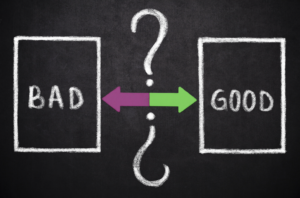The Last Look…
Posted by Colin Lambert. Last updated: August 15, 2023
Naturally, I am going to take advantage of the recently-published BIS paper on HFTs in dark pools to give the equity market structure a kicking, but there is a more serious aspect to this column – namely, how self-regulation and responsible management at certain firms often leads to better outcomes for the market as a whole.
The paper, published last week, finds that HFTs provide very little (if any) passive liquidity in dark pools studied by the authors. These pools were in equities markets, which makes sense because there are simply more of them in that space.
I have long been a fan of dark pools, but what this study highlighted was how the imposition of regulation, especially around providing an equal ground for everyone to play on, has actually done nothing of the sort. In my view, dark pools only work if they are built around a sensible mechanism that rewards genuine risk transfer.
To the best of my knowledge, those few dark pools that are effective in FX have this benefit, largely because they only allow certain types of market participants to play. This is seen in some quarters as being restrictive on competition, but the reality is, all a venue needs to do is say anyone is welcome, as long as they fulfil these guidelines. Stick a decent amount on as a minimum, have a certain amount of resting orders as a percentage of trades and, importantly, don’t allow people to “ping” it.
The BIS paper highlights the benefits of a speed bump – something the FX market could have told equities about a long while ago – but interestingly it doesn’t go into randomisation, which is another technique the FX industry has deployed.
Whether you agree with these mechanisms or not, the facts are that FX is generally not seen to have a problem with HFTs, while equities quite obviously has. You don’t see FX firms building microwave towers for example.
I understand this is all a bit “turkeys voting for Christmas”, but another factor in this is the dark pool operators’ dash for cash. A very simple solution to a problem of people using stale reference prices in a dark pool is don’t let those firms in. Who though, is going to take that step when the firms concerned boost the pool’s numbers, both in trades, volumes and revenues?
Some people talk about the liquidity HFTs add to the market – well the BIS study would appear to refute that argument quite comprehensively
I still feel that dark pools should be primarily used for players with sizeable risk to offload at least part of it. Market impact and information leakage are becoming bigger issues in FX markets – they have been a factor in the über-transparent equities markets for years – and as such dark venues should play a larger role in the years to come. Again though, there have to be sensible targets in terms of types of user and the business they normally conduct. Internalisation will take certain players so far, but the exhaust flow will always be a challenge –dark pools can at least dilute the problem.
Those who are against dark pools have one very reasonable argument of course – and this is a point raised by the BIS paper – how to ensure accurate and timely reference prices? The fact of the matter is, internalisation has hurt the primary ECNs in particular over the past decade, and any venue using reference prices subject to last look are just asking to be gamed. So where does the pricing come from? Especially if the primary volumes continue to decline (which is by no means guaranteed from their currently, historically low, levels)?
Perhaps one answer is to randomise the market data being used? For example, source reference data from a number of venues, preferably no-last look platforms, and then randomise where the mid-rates are sourced? This way, firms seeking to jump on a stale reference rate (if speed bumps are not in play), will have more uncertainty and commensurately less confidence, in their strategy.
It is hard to see HFTs as anything other than toxic – although it needs to be stressed there is a big difference between an HFT and firm with quick technology, it’s all about how you use it – and therefore markets need to be protected from the predatory approach. People talk about the liquidity these firms add to the market – well the BIS study would appear to refute that argument quite comprehensively.
A dark pool is a good idea in FX markets – especially if it is backed up by market data from a wider (and randomised) source of venues. This is an idea that works, and as such the BIS paper should be viewed for what it effectively is – more evidence that it is the equity market structure that needs to change dramatically, rather than the FX.



